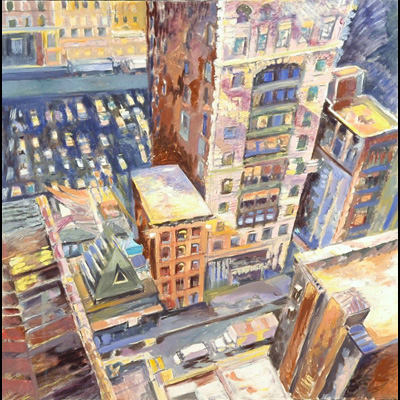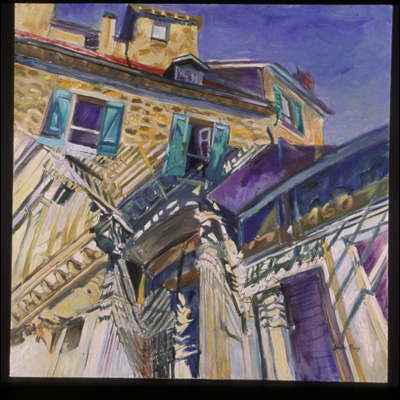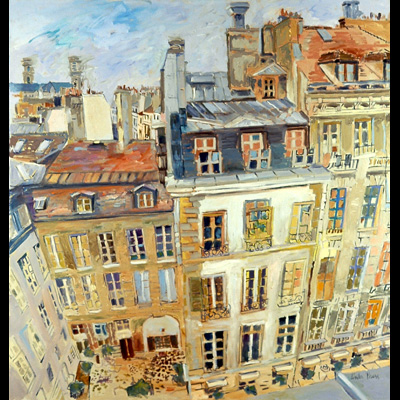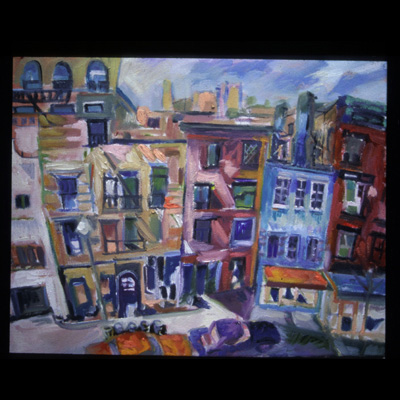 |
 |
 |
 |
 |





The MFA program enabled me to spend concentrated time developing my paintings. I enjoyed the camaraderie of the other students in our studios in Low Library and benefited from critiques by faculty and guest critics including Robert Motherwell, Stephen Greene, and John Heliker.
Misconnections intrigue me. Two unrelated experiences-discovering the ease of moving words and shapes around a computer screen and assembling multiple photographs of one building into a larger, naturalistic image-began my artistic exploration into a new, disordered reality.
My paintings are defined by their expressive content and abstract structure as much as by their subject. Although figurative on the surface, my thoughtfully designed abstract compositions reflect my youthful studies with Robert Motherwell during the height of Abstract Expressionism. They explore how the poetic quality of light and shadow counterpoint the tangible structures of nature and man-made objects. My life-long interest in light and how it creates form, and forms patterns in these works connects spatial relationships with conceptual ideas that rest beneath the surface.
Like rearranging photographs on a table, I move space and perception around in these paintings. The paintings explore how spaces and buildings morph and change; although at first glance they seem normal. Each painting reflects ideas about one scene in time, through time, at different times, and in direct and remembered perception of a place. They allow disorder to expose a deeper, wider reality. The misconnections from these patterns make the painting closer to "reality"-an emotional, visceral reality. The very disorder caused by juxtaposing different perspectives of the same image creates a new order simultaneously unique and consistent. The more you look at a painting, the more it opens up to you. These distortions encourage you to look more carefully and question further.